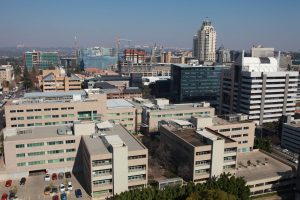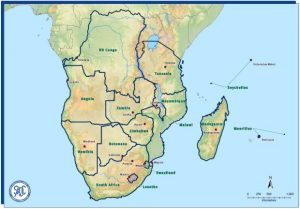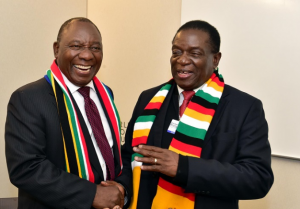Last week I had the privilege of spending a few days in Johannesburg and was struck by how clearly one can see the two possibilities for the region.
- A Bright Future ?

On the one side, hope and promise are everywhere. I was doing some work for a former student who has his company headquarters in the neighborhood of Sandton. I had been there on my last trip to the City ore than 20 years ago and was impressed by the shining new office and residential towers, clean streets and impeccable villas scattered through the hills.
At one point our driver used Waze to beat the traffic and took us through an incredibly propserous and beautiful residential area just a few miles from the city.
My friend’s Board of Directors was a mix of razor sharp finance people, both white and black, and they represented to me a thriving financial community able to fund investments in the futre of South Africa and beyond.

One important idea that was under discussions was the potential of the South African Development Community (SADC). An earlier co-ordination organization was initially created at a conference in Zambia in 1980 with the idea to “advance the cause of national political liberation in Southern Africa, and to reduce dependence particularly on the then apartheid era South Africa”.
In 1992 the SADC treaty was signed with South Africa and today the region has a well established structure, a number of programs and policies and a population of 327 million people with a GDP of $ 600 Billion. South Africa accounts for 17% of SADC’s population and about half of its GDP.
In South Africa, the people I spoke with were encouraged by the first months in office of Cyril Ramaphosa who replaced Jacob Zuma as President after winning control of the African National Conference. Zuma had been forced from office by his own party for corruption and is largely credited with taking South Africa in the wrong direction during his tenure. With Ramaphosa, the idea is that the country would get back on track creating economic opportunity for the millions of people who have, so far, made little progress.
Another thing that gave me hope while I was in South Africa were the early results from the election in Zimbabwe that indicated that the process had been peaceful and that the poling places seemed to be functioning well with the new biometric system that the election commission had been using.
- More of the same
While endless traffic jams and new building are a sign of economic progress, it was explained to me that some of the newer buildings in Sandton are actually empty. The traffic puts a drag on personally and economic growth and people take hours to get to work and school.
One also sees many people walking along the highways like in other African countries and little in the way of affordable public transportation. Driving out of town takes you past Alexandra where Nelson Mandela lived and which is still one of the poorest communities in the country.
At the political level, it soon became apparent that the election in Zimbabwe was far from free and fair and in addition to the expected dominance of the news media, Emmerson Mnangagwa has been declared the winner with a suspicious 50.8% together with a parliamentary dominance that defies common sense.

Not only has the former General had his troops fire on protesters killing 3 people but the Guardian is reporting a massive crackdown on the political opposition.
Ramaphosa, who is also the Chairman of SADC, has congratulated Mnangagwa and called for the people of Zimbabwe to accept the result.
So what will be the future of Southern Africa ? My hope is that economic progress and engagement with the international community will continue to build on the region’s potential.


I spent last summer on Johannesburg and you can see a clear difference between the poor side and the rich side. I just hope this get better in this aspect.
The new economics and the open to the international community will be their input to a better city to everyone equally.